Visiting the amazing ancient city of Pompeii and Mount Vesuvius has been on our bucket list for a while. We visited in 2018 during our trip to Naples. In this post, we will tell you how to visit from Naples and Sorrento. We will also show you the amazing things to see once you are there.
VISITING POMPEII & HOW TO GET THERE FROM NAPLES
BY TRAIN
From our hotel, Rex Lifestyle Hotel, to the Napoli Centrale Station, it cost a fixed €18 in a taxi. Once you enter the station, you must follow the signs downstairs to the ‘Garibaldi’ line and the Circumvesuviana platform. The station clearly marks this with large blue signs.
It is from here you buy your tickets. It took us around 20 minutes to buy these after joining a queue. Be warned though, locals will push in-front of you. They don’t care you’re here to see the sights, they just want to get on with their day.
Tickets in hand, you will then need to make your way to platform 3. A very busy platform. The Naples – Sorrento Circumvesuviana service also takes you to Herculaneum. The other famous town destroyed during the eruption of Vesuvius in 79AD, so if you have time you could stop here too. Trains run frequently, every 30 minutes in fact, until around 10pm. Our tickets cost €11.20, this included a return trip, which we thought was reasonable.


The trains can be very busy. Be ready, because once the train stops at the platform and those doors open, everyone makes a mad dash to find the last spot. Once those spots are full, they’ll try to find spots that don’t exist until they cram you in like sardines in a tin.
You will depart the train at the Pompei Scavi-Villa dei Misteri stop from both Naples and Sorrento. This is directly outside the archaeological site.
The journey to Pompeii lasts around 35 minutes. Be prepared to stand this entire time. Take some water, as the carriages can be hot and very humid.
For more train, flight, bus and tickets, try Omio. We have used this several times during our travels and they come highly recommended.
IF YOU ARE STAYING IN SORRENTO, BY TRAIN
Once again, you will take the Circumvesuviana line to Pompeii, just the opposite way. From the train station in Sorrento, you need to take Line 1. Tickets cost around €10, including the return journey. The journey from Sorrento is a little longer, approximately 45 minutes.
THE ANCIENT CITY OF POMPEII
Once you arrive at Pompeii, you’ll need tickets to enter. There are several ticket booths offering a range of tours and services just outside the site. We opted for a self lead visit rather than a guided tour. We bought ‘skip the line’ tickets for €15 each and made our way to the entrance.
Pompeii, lying in the shadow of Vesuvius, a once thriving city. The streets lined with Roman soldiers, families, business owners and children. People just getting on with their daily routines. Wiped out in an instant. Cobbled roads with the grooves of carts drawn by horses are still visible.
Pompeii entry ticket with an optional audio guide. Visit the UNESCO World Heritage site of Pompeii with a reserved entry ticket and optional audio guide. Learn about the lives of ancient Romans as you explore the archeological site at your own pace.
Frescoes, columns, bakeries and food shops are all still here as if they could spring to life again any minute, all beautifully preserved. Don’t forget to go look for the plaster casts of the people who died that day, frozen in time, found in the position they perished in. A very eerie experience.
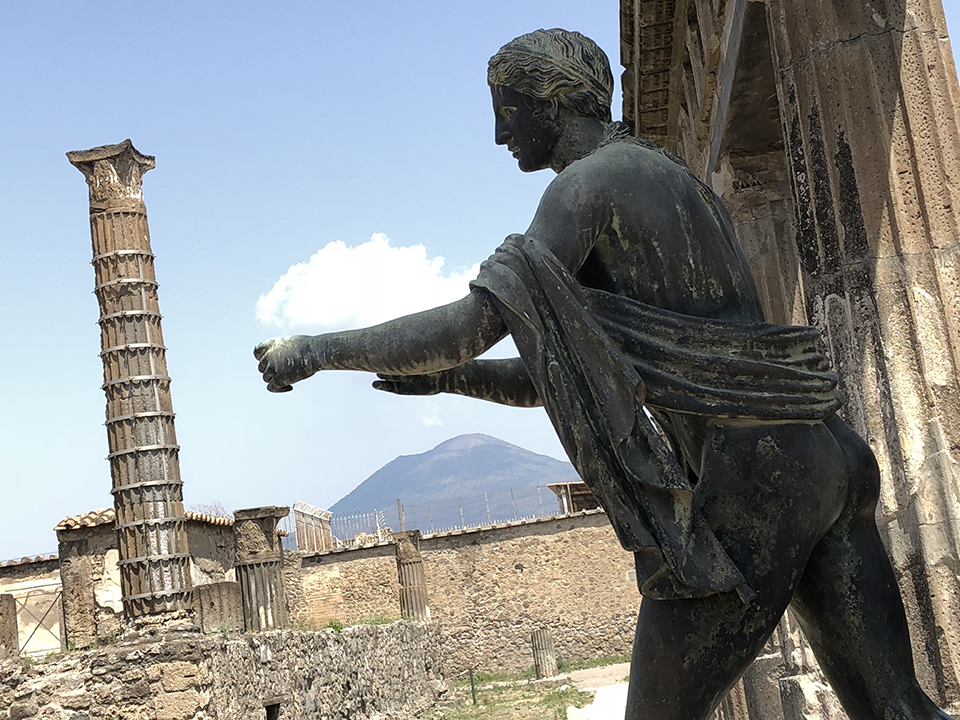
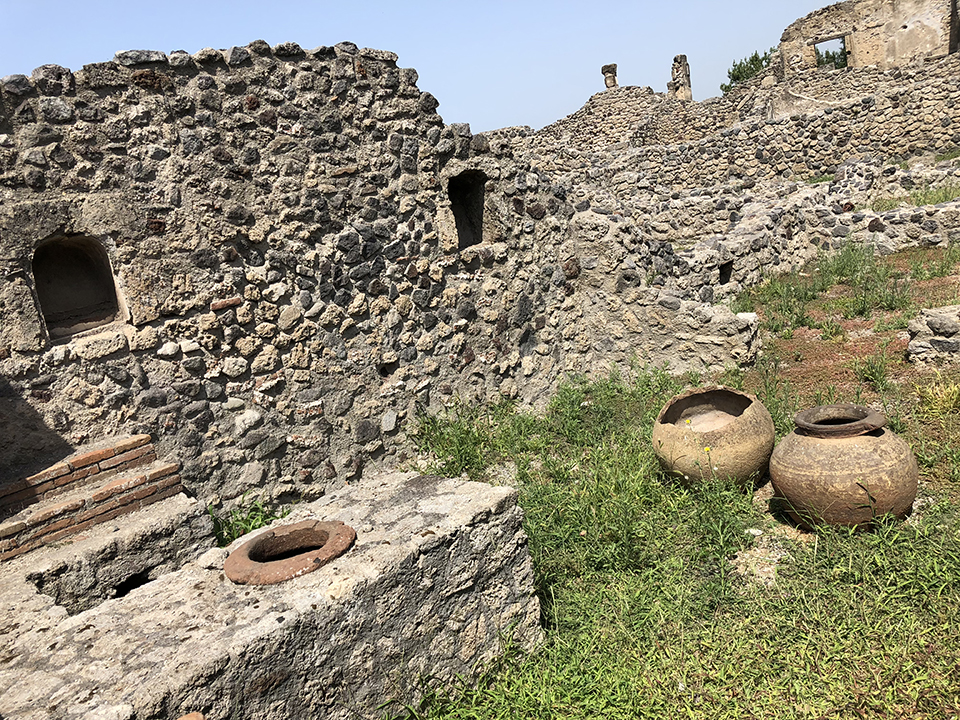
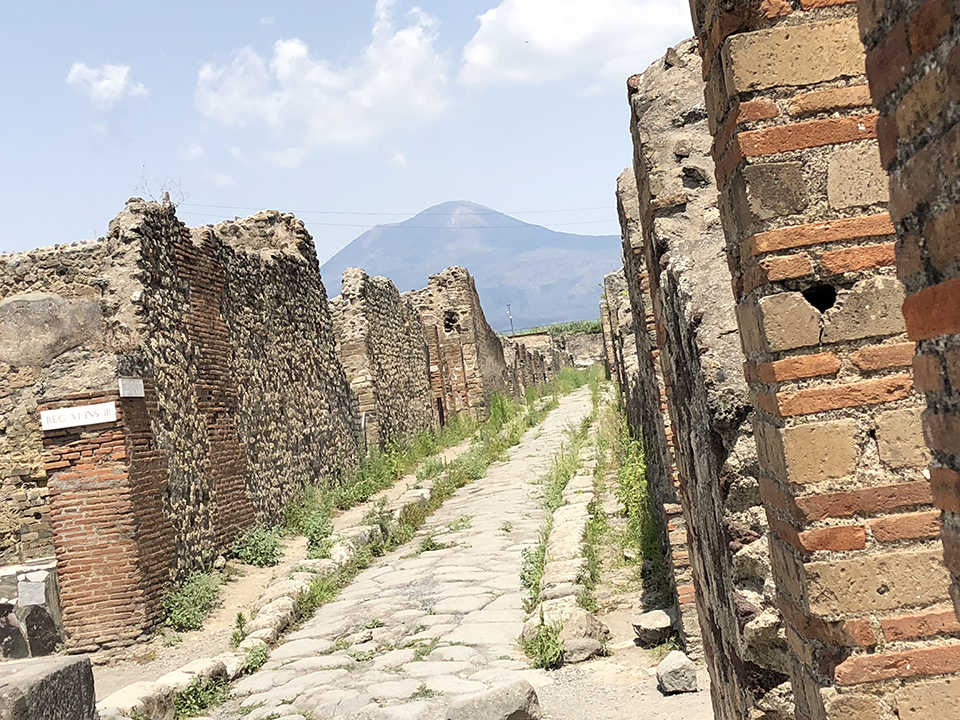
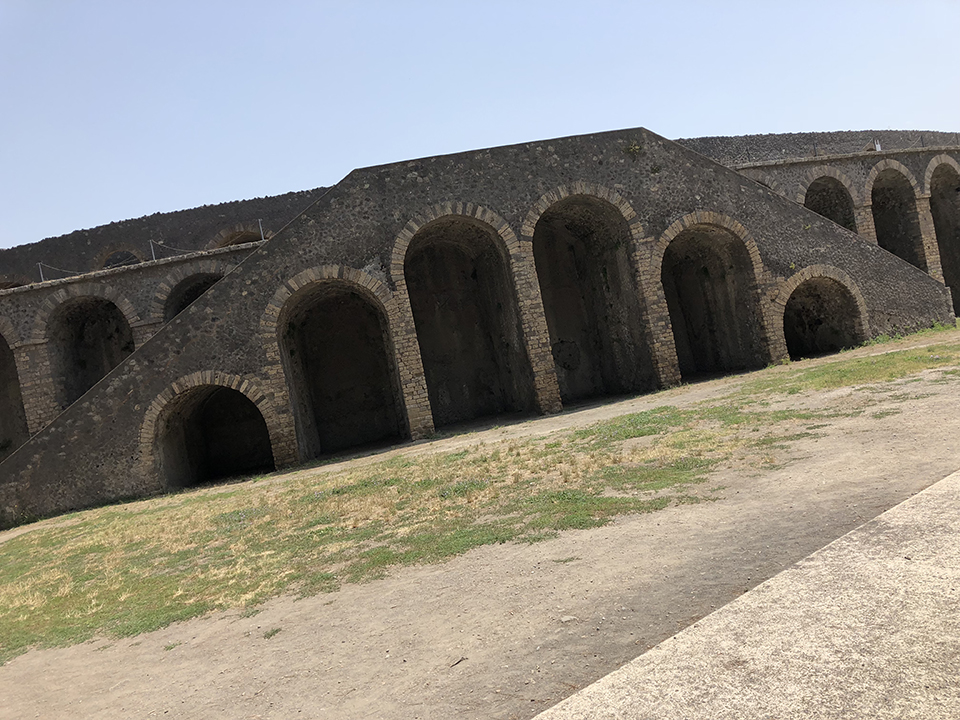
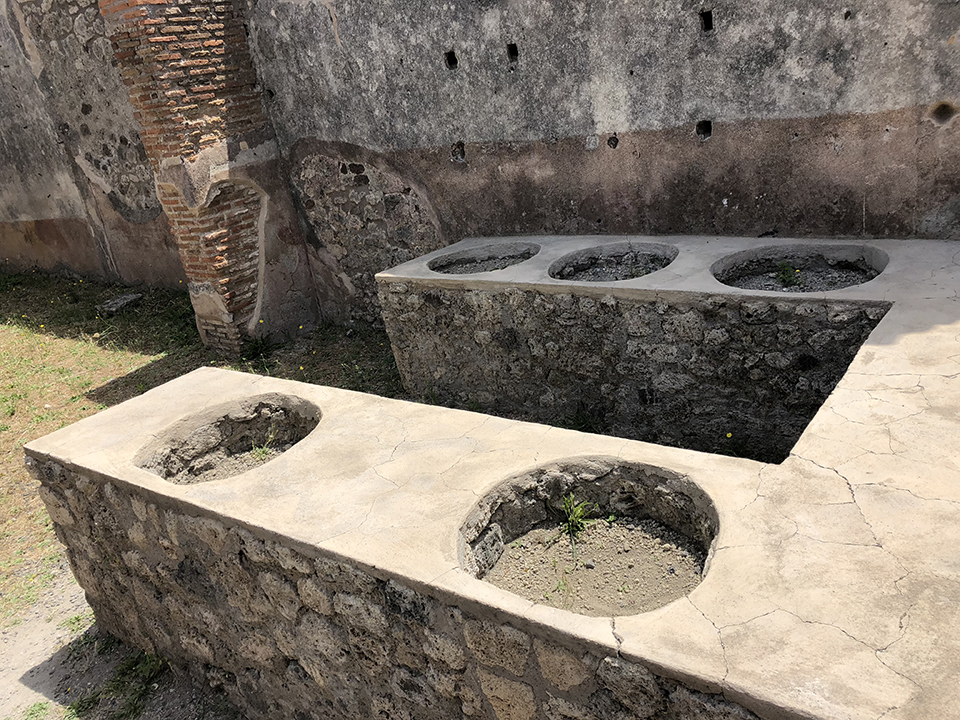
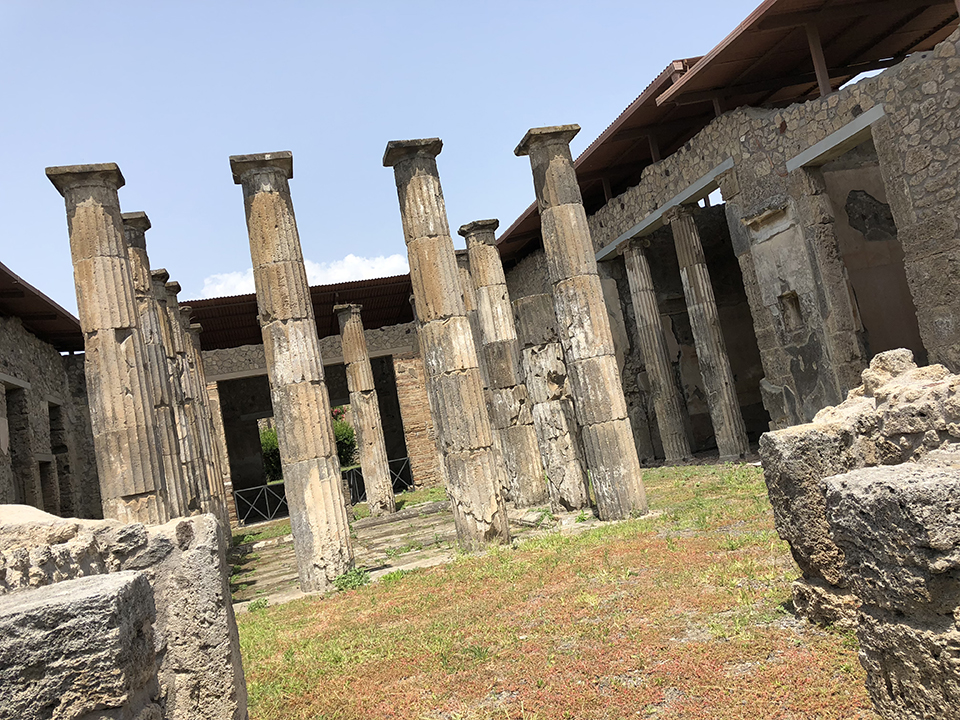
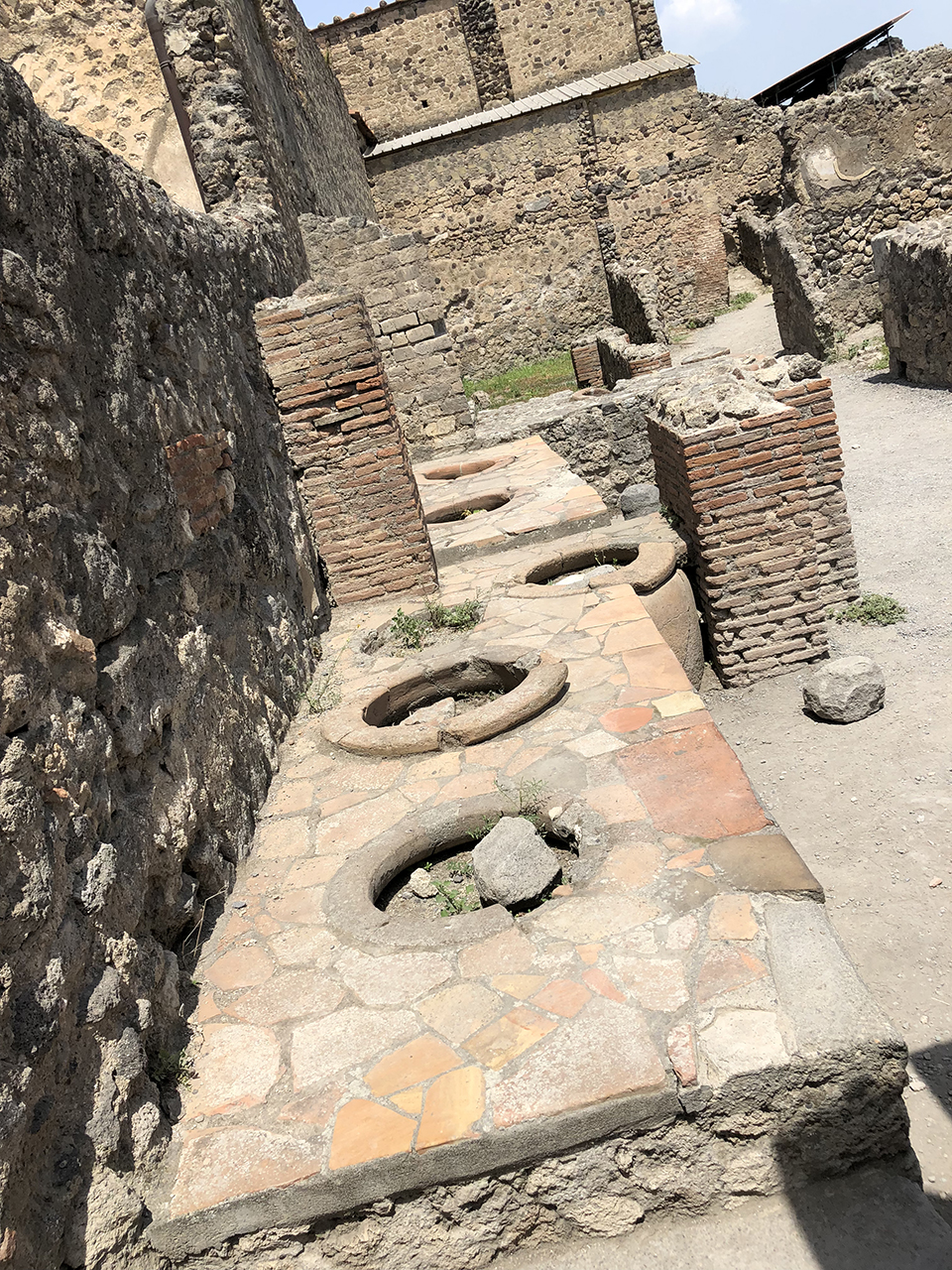
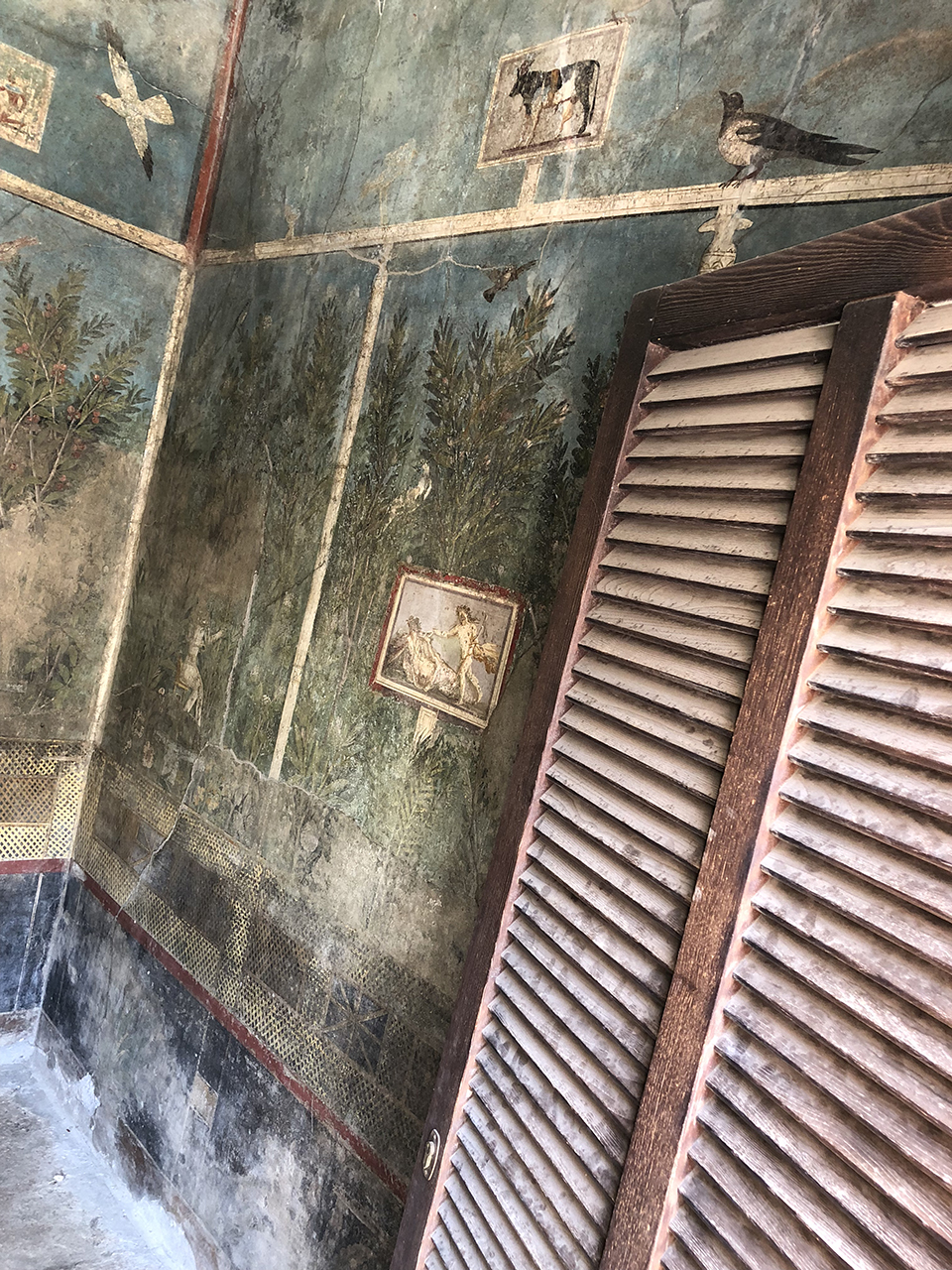
THE FRESCOS OF POMPEII
The ones at Pompeii are some of the best preserved. The volcanic ash that spewed from the volcano covered them for thousands of years, providing them with excellent protection from the elements. Colourful pigments remain and we now get to enjoy these ancient masterpieces.
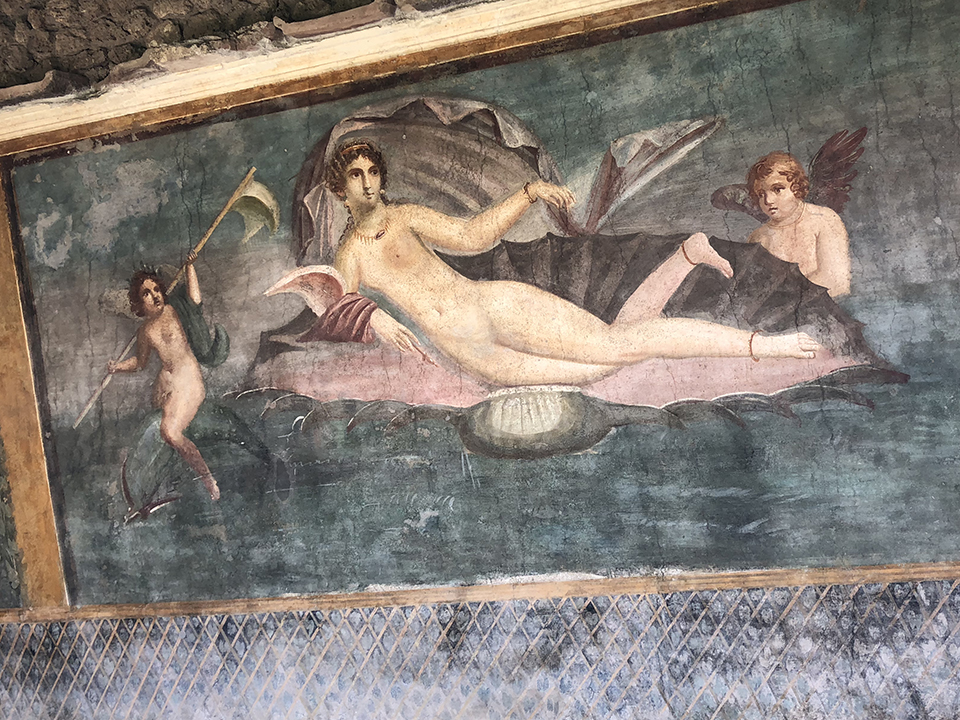
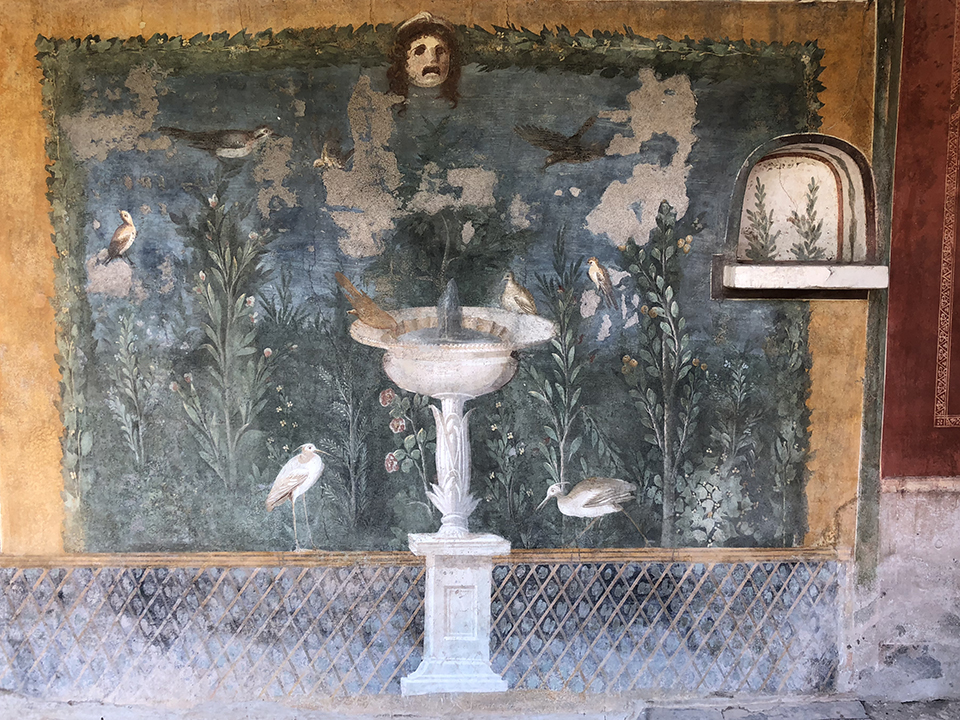
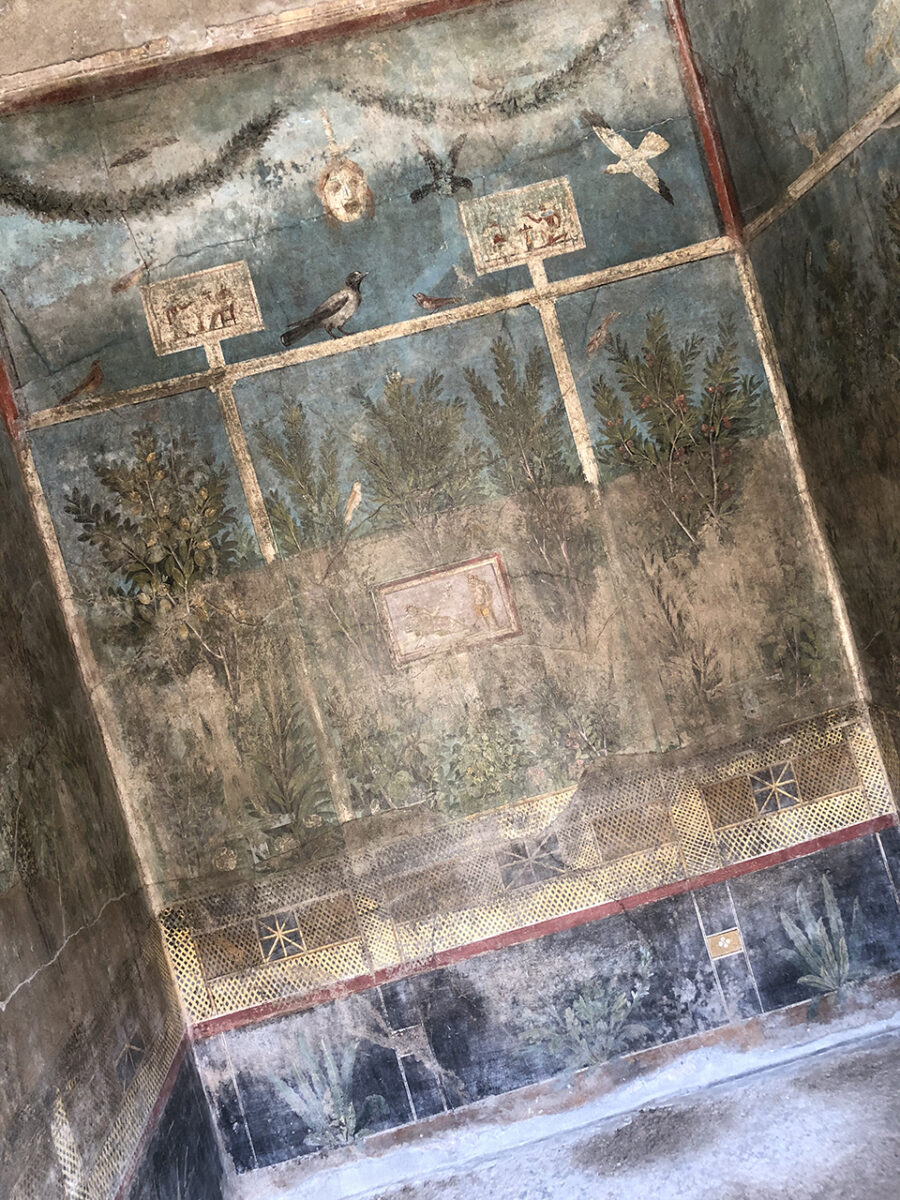
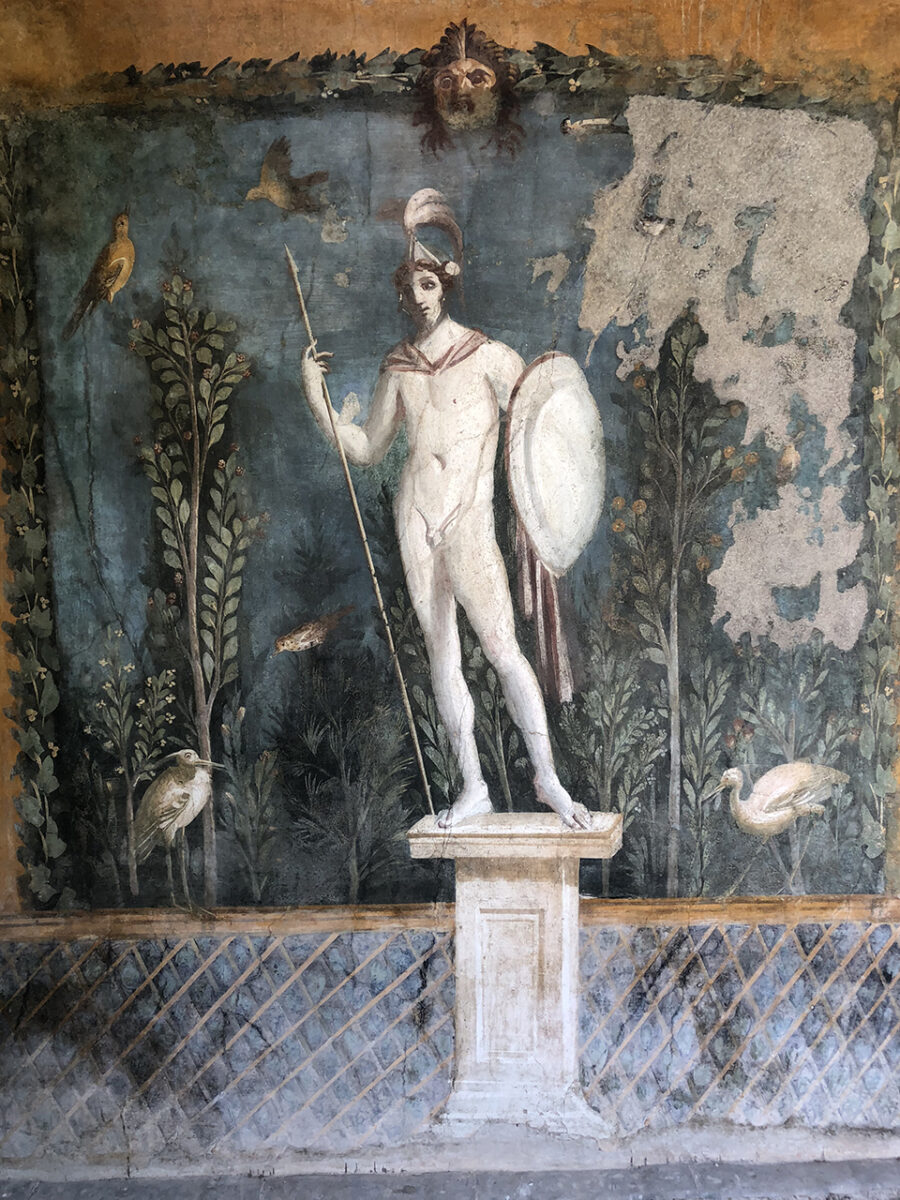
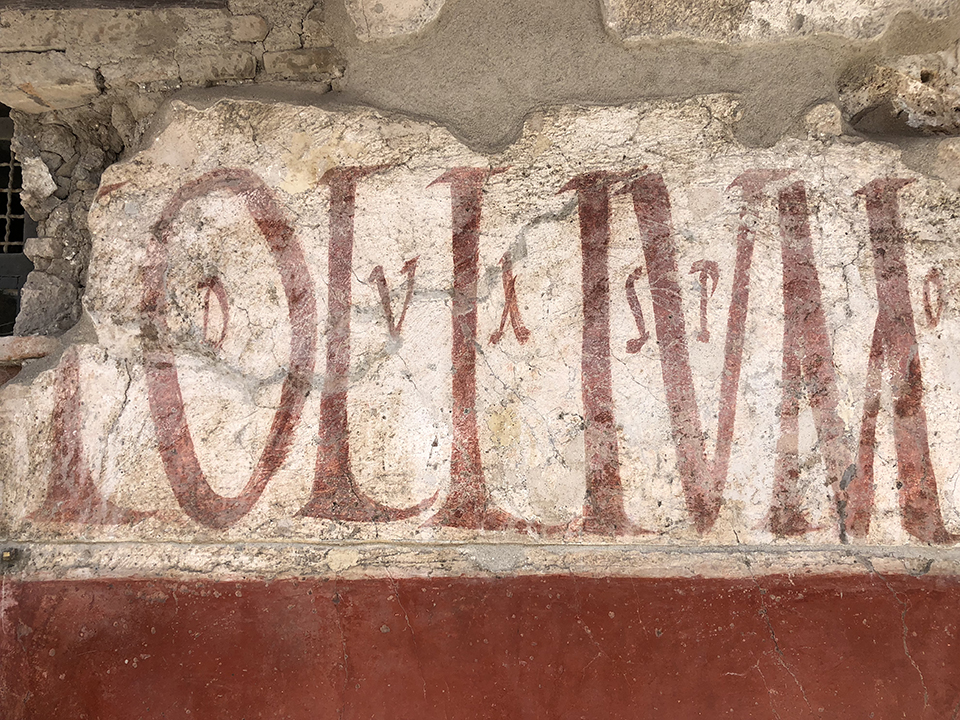
FIVE FACTS ABOUT POMPEII & MOUNT VESUVIUS
- The ruins of Pompeii were first discovered in the late 16th century by architect Domenico Fontana.
- They designated both Pompeii and neighbouring Herculaneum a UNESCO World Heritage Site in 1997.
- Mount Vesuvius erupted in 79AD destroying the city of Pompeii. If the wind had been blowing in its usual SW direction during the eruption, the people would have had a better chance of survival.
- Mount Vesuvius last erupted on March 17th, 1944, during World War II, killing 26 people.
- Pompeii was once a thriving city and the Emperor Nero is thought to have had a home there.

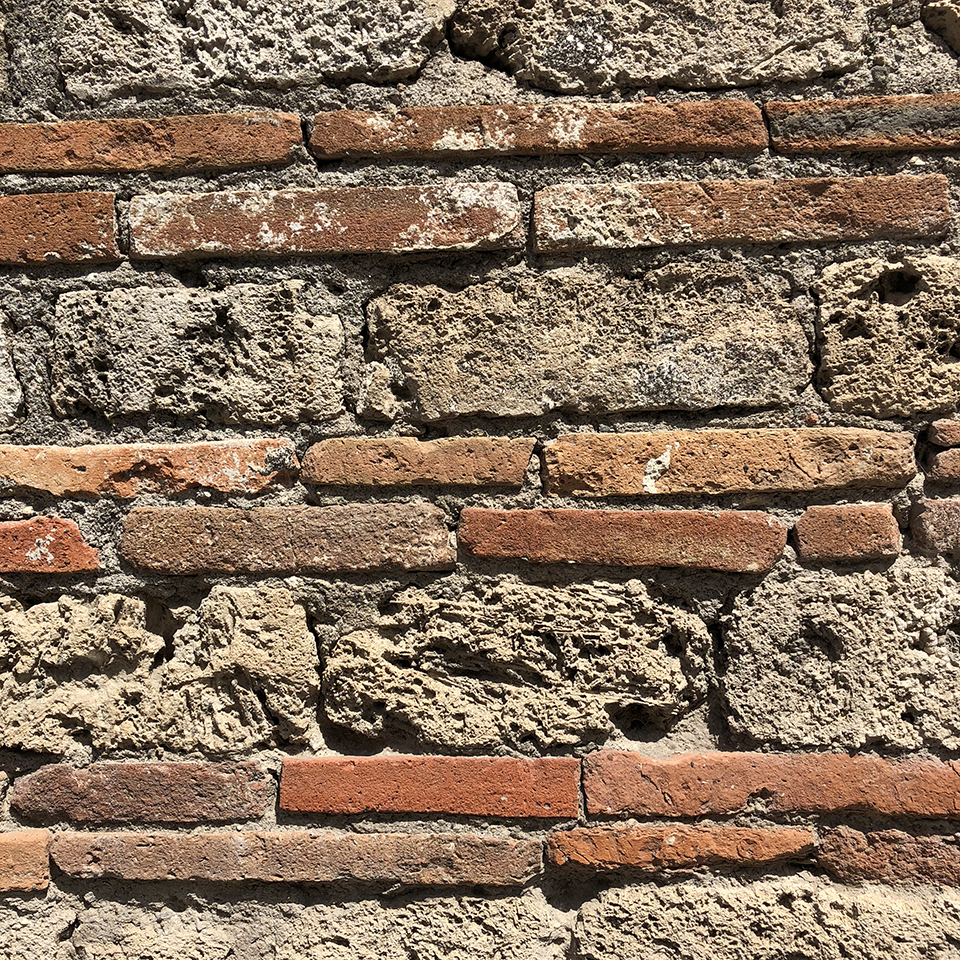

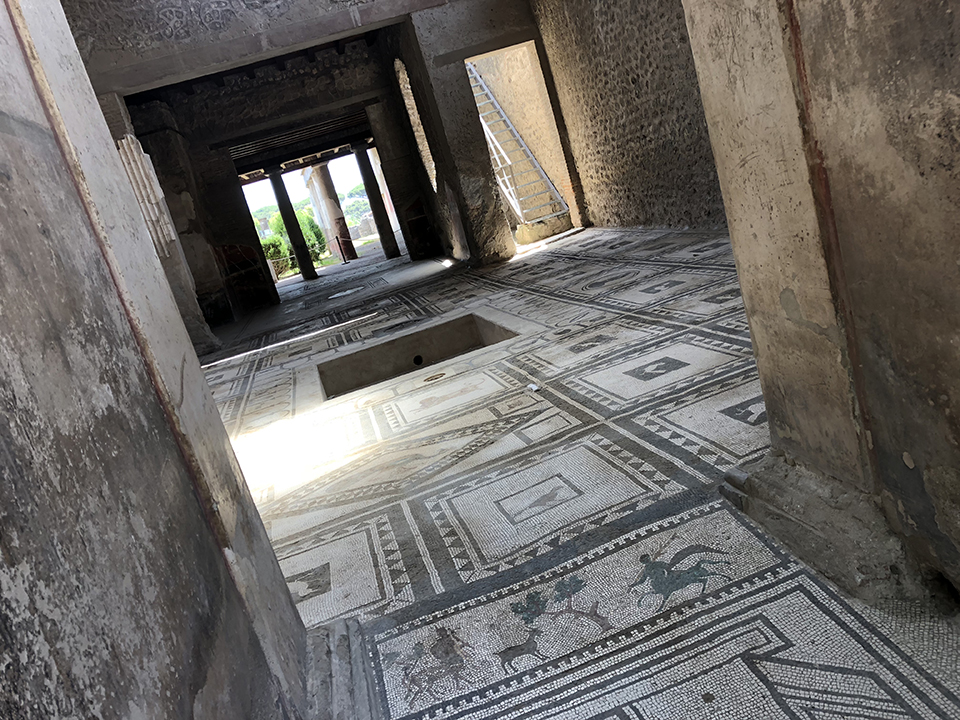
THE PEOPLE OF POMPEII
Here at Pompeii, you will see the famous plaster casts of residents, found in the position that they perished in. They made these casts by pouring plaster into the voids that were left after the body decomposed, leaving only the skeleton behind. The preservation of men, women, children, dogs, and horses is remarkable. The process of doing this was first undertaken around 1870 by Giuseppe Fiorelli.
You can see the plaster casts at both Pompeii and the National Archaeological Museum of Naples.
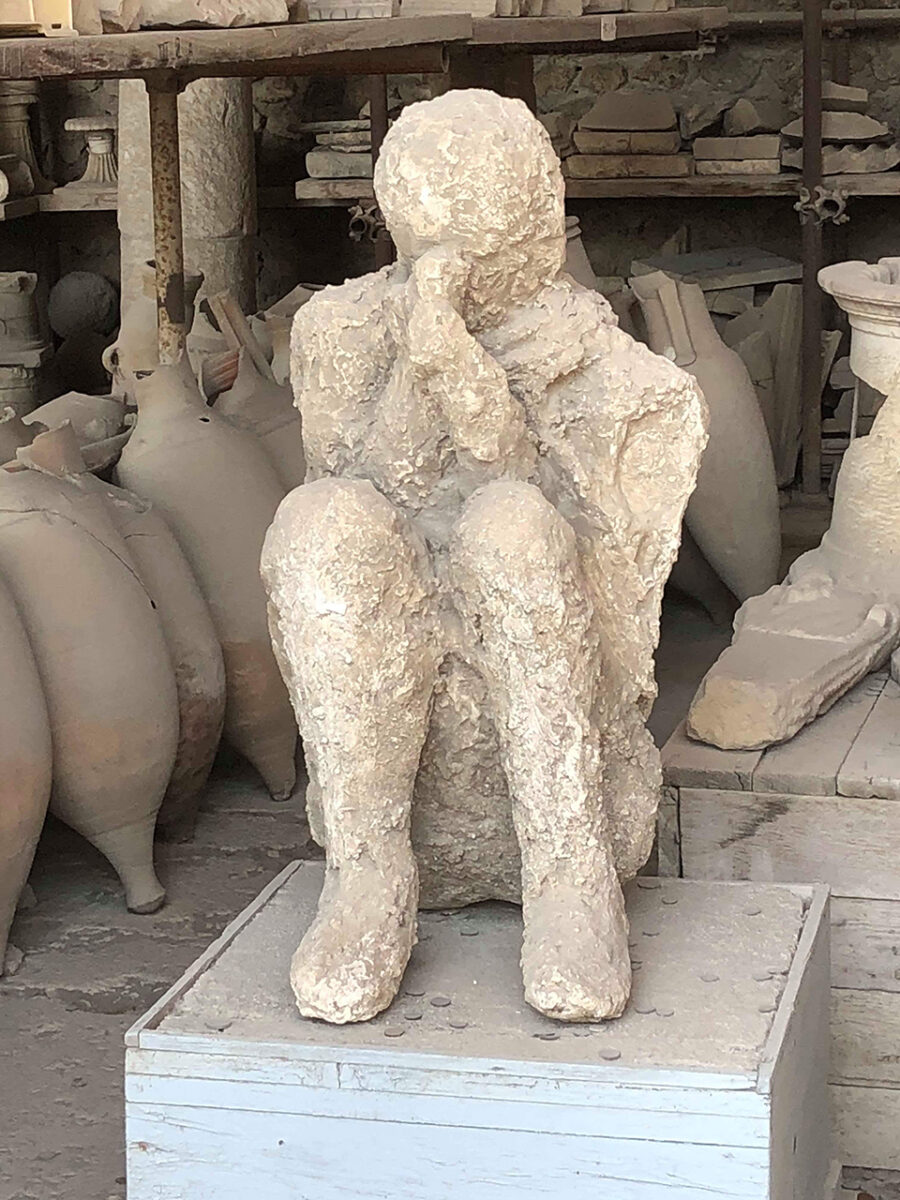
We had a good three hours exploring, but to be honest, we could have spent all day here. There is so much to see and the place is huge. The only reason we left early was so we could visit the next stop on our journey, Mount Vesuvius. Before buying our ticket for the coach, we grabbed a few snacks and some water from one of the food stalls.

DOWNLOAD A MAP OF POMPEII
If you would like to plan a route around the site of Pompeii before your visit, you can visit the official site and download a map: Map and Guide to the Excavations of Pompeii.
VISITING MOUNT VESUVIUS
Coach tickets for Mount Vesuvius cost €10 each and are available from vendors outside the gates of Pompeii. There is another charge to enter the National Park and crater area. You pay this when reaching the coach park at the Vesuvius National Park entrance. Tickets for this cost a further €10. The scenery on the way up is quite something, though. Through winding roads, forests, we passed tomato plantations and several small villages. There were also many burnt and charred trees and buildings.
Advice, wear some very comfy trainers or boots for this because you are going to do a lot of walking. Also, take plenty of liquids. You are going to need it. There is a small snack shack on the way up, though, just in case you forget. The hike to the crater over the soft, ashy, and stony ground is pretty rough. But once you get to the crater’s edge, the views are incredible out over the Bay of Naples.
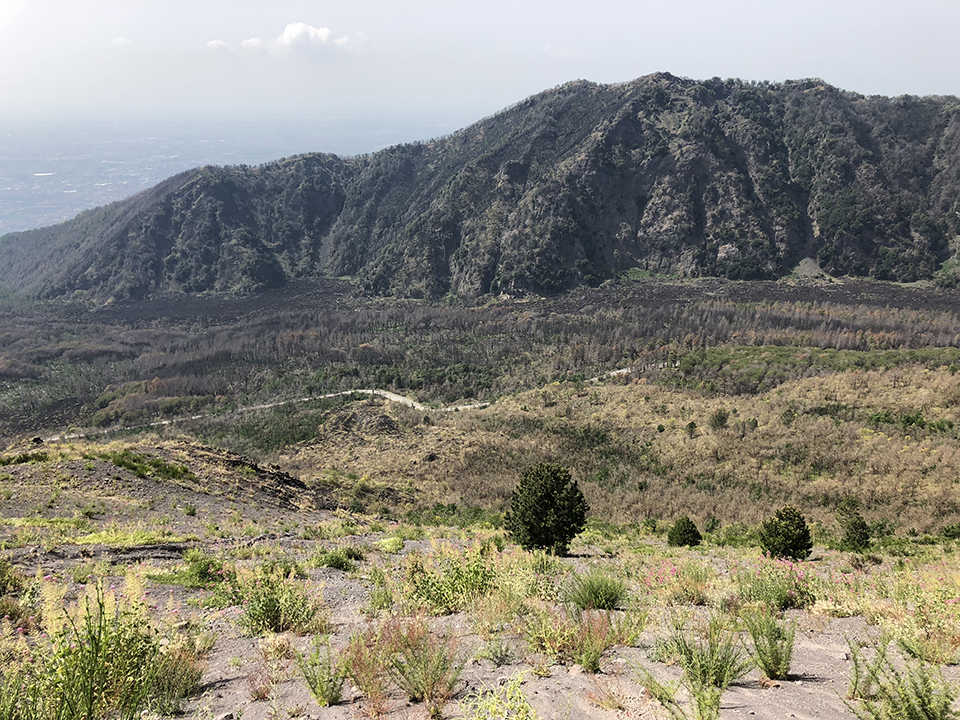
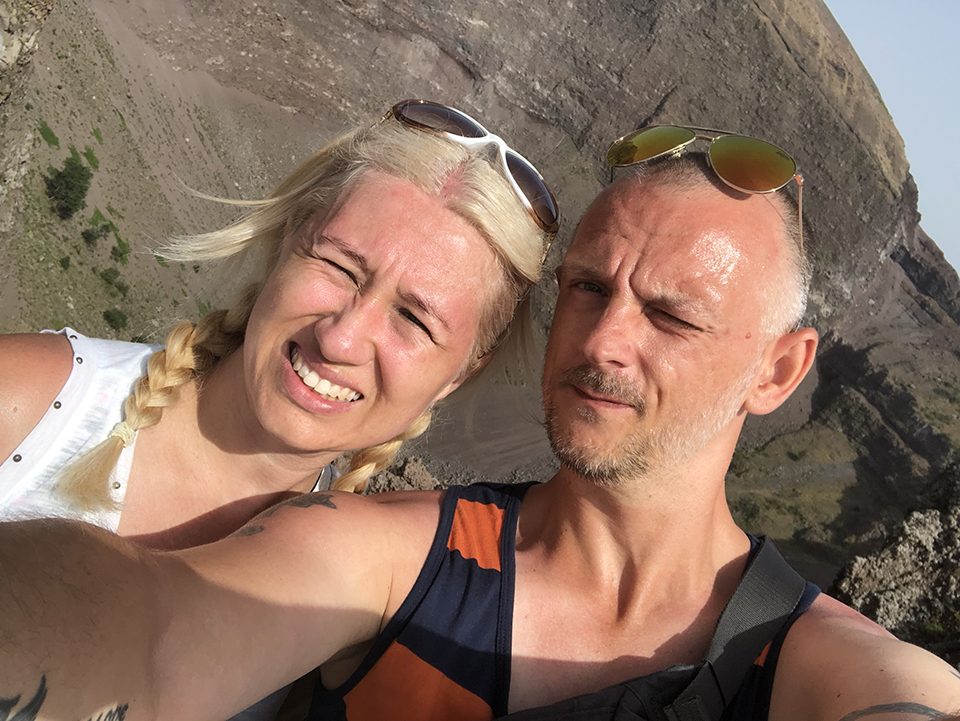
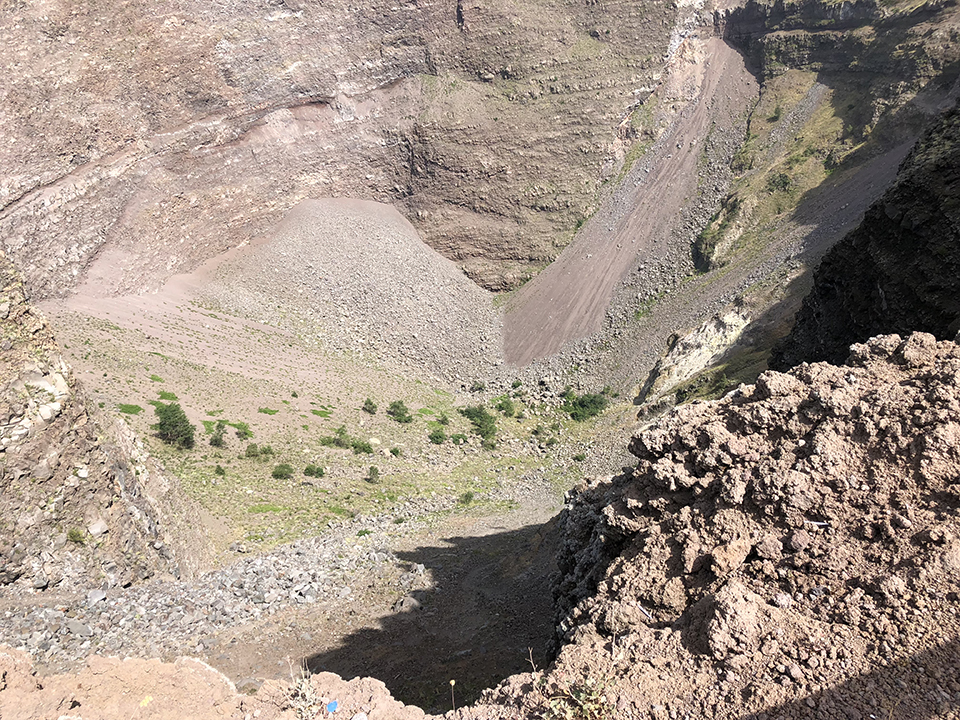
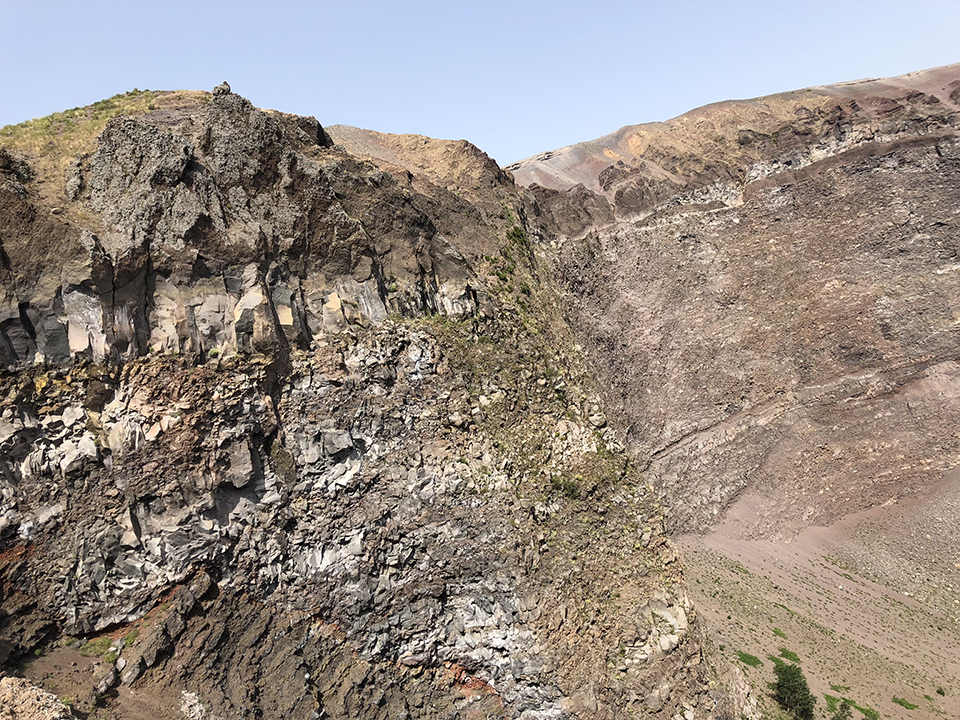
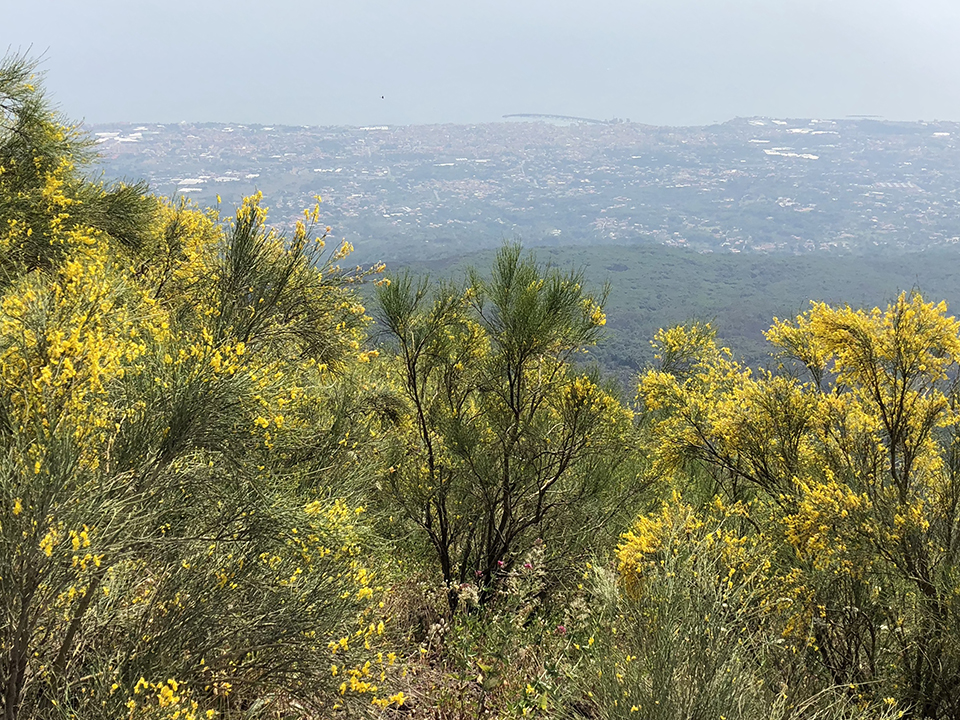
SPECIALIST TOURS & EXPERIENCES WITH GET YOUR GUIDE
Pompeii: Small-Group Tour with an Archeologist: Discover Pompeii with an archaeologist guide on a shared or private tour. Explore the excavations and admire artworks, mosaics, and frescoes while learning about the story behind the site.
Mount Vesuvius Wine Tasting and Lunch from Pompeii: Visit a vineyard and winery in the Neapolitan countryside. Learn more about grapes as you stroll amongst the vines, before digging into a 2-course lunch paired with matching wines.
Read: 13 Amazing things to do in Naples, Italy.


Leave a reply